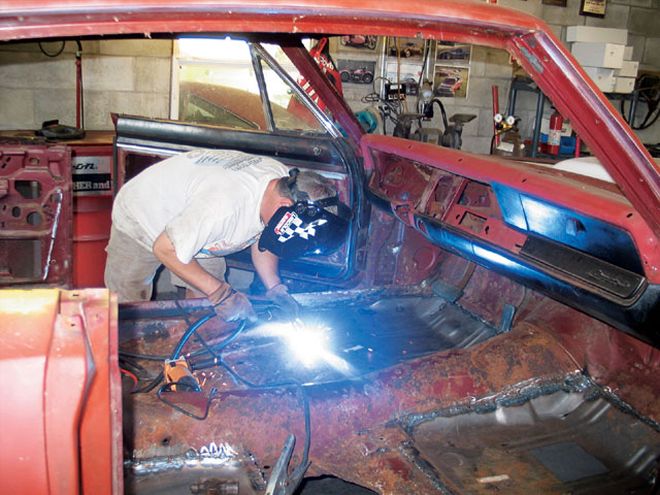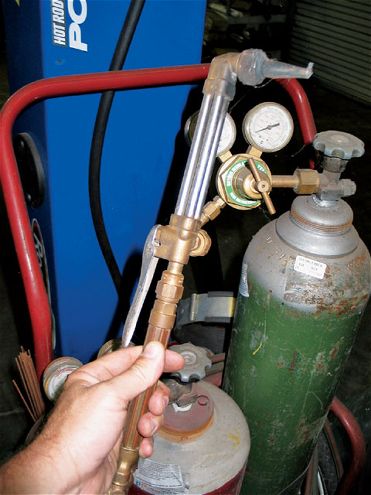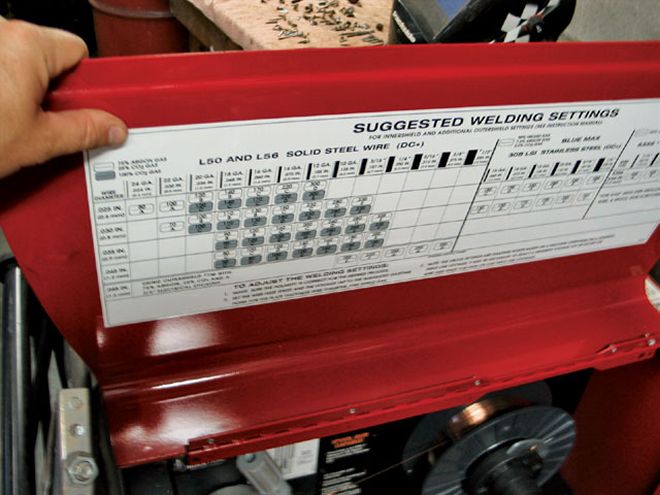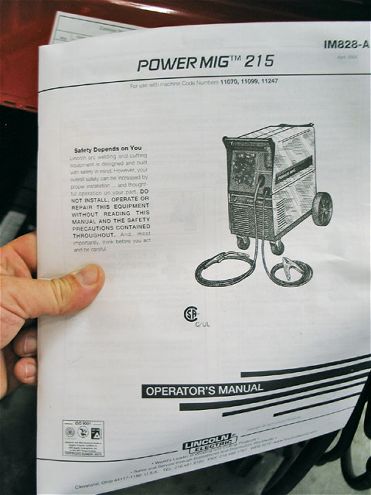

At one time or another it's happened to all of us. While working in the shop late at night trying to finish a project, we discover a part that will need to be repaired by welding. Luckily, some of us have welding equipment and can repair the part and move on. For most though, the project will have to be put off until someone else can perform the work, costing not only the price of labor, but more importantly, the time it takes to remove the part and take it to be welded. Chances are most of you don't have a welder in your shop. Frankly, the thought of using high electrical voltage to heat metal until it melts together permanently is enough to scare most people. When performed properly with the right equipment, however, small welding projects can easily be accomplished at home.
Many people don't consider getting their own welding equipment simply because they don't understand the principles of welding. The fact is, you don't have to understand welding principles to be able to weld safely. Sure, there are basic rules to follow, and the proper safety equipment must be utilized, but with some practice anyone with a little mechanical know-how can learn to weld. Modern welders are extremely user friendly and come with clear instructions covering all the basics of welding. Like anything though, once the basics are learned, practice determines how good a welder you'll become.
 Not many people are aware, but the same tanks you use for a cutting torch can be used for welding.
Not many people are aware, but the same tanks you use for a cutting torch can be used for welding.
Choosing welding equipment can be a daunting task in itself. There are many welding types, from oxygen/acetylene, to electric arc, to TIG, so simply knowing which type of welding makes the most sense for the projects you'll encounter is a good place to start. We'll briefly outline the different types of welding, starting with oxygen/acetylene welding, but we'll concentrate on the type of welding that makes the most sense for automotive repair-MIG welding.
Oxygen/Acetylene Welding
One of the oldest methods of welding metal is performed by using the same oxygen/acetylene tanks that many of us power our cutting torches with. By changing the tip of the torch to a tip designed specifically for welding, this process can be used to weld steel of any thickness you'll find on your old Mopar. Although this method of welding can provide some of the strongest welds, it takes lots of practice and is fairly unforgiving. Inexperienced welders can quickly melt huge holes in parts by using this process, or worse yet, not achieve the penetration necessary for a strong, safe weld. For these reasons, we recommend you use the tanks for cutting and try a more conventional form of welding in your shop.
 Most MIG units are extremely user friendly. our Lincoln unit has suggested wire sizes, amperage settings, and feed speeds printed right under the cover, making it virtually impossible to screw up.
Most MIG units are extremely user friendly. our Lincoln unit has suggested wire sizes, amperage settings, and feed speeds printed right under the cover, making it virtually impossible to screw up.
Electric Arc (Stick) Welding
Another common welding process is stick welding. Stick welding is a form of electric arc welding that uses high-voltage electricity through an electrode (the stick) that is arced to the part to be welded, which is grounded to the welding machine. The welding sticks are coated with flux, which burns during the welding process, creating a shield of inert gas around the weld. While this method of welding is commonly used for automotive repair, it does have some drawbacks. It's difficult to weld in tight spaces with a stick welder, and welding very thin material like body panels can be a real challenge. A nice feature of stick welders, however, is their simplicity and inexpensive price. If you want to weld and you're on a strict budget, a stick welder may be adequate for your needs.
 No matter the type of welder, always read the instructions and safety precautions in the provided manual. The manual that came with our Lincoln not only had instructions on how to operate the unit, but basic welding instructions as well.
No matter the type of welder, always read the instructions and safety precautions in the provided manual. The manual that came with our Lincoln not only had instructions on how to operate the unit, but basic welding instructions as well.
MIG Welding
MIG welding is the common name for a welding process known as the Gas Metal Arc Welding process. The term MIG stands for Metal Inert Gas, which is a term leftover from the early days of arc welding. The MIG process actually incorporates the automatic feeding of a continuous, consumable wire electrode that is shielded by an externally supplied gas, usually argon or carbon dioxide. These machines are sometimes referred to as "wire feed" welders and are very versatile. Small MIG units work well on steel, are inexpensive, and easy to use producing high-quality welds on materials of various types and thicknesses. Welding with a MIG doesn't produce the slag or splatter common to stick welders, and with a little practice even an amateur welder can weld with a MIG. Small MIG units can easily handle most automotive welding, and most will run on the 110-volt alternating current electricity common to our houses and garages.
TIG Welding
The Gas Tungsten Arc Welding process is commonly referred to as TIG welding. TIG is actually an abbreviation for Tungsten Inert Gas, and this method of welding is especially useful if the material to be welded is made from aluminum, chrome-moly steel, or is very thin. The TIG process utilizes a nonconsumable tungsten electrode, which is connected to the welder by a cable. Unlike wire feed welding, any consumable welding rod must be manually fed into the welding puddle during the TIG process. Like MIG welding, the actual weld is shielded by an inert gas, typically argon, helium, or a mixture of the two. While TIG welding is useful in unique situations and does provide quality welds, the equipment is relatively expensive, and TIG welding is an art that must be practiced to be performed properly. For these reasons, TIG welders are seldom seen in the hobbyist's garage.